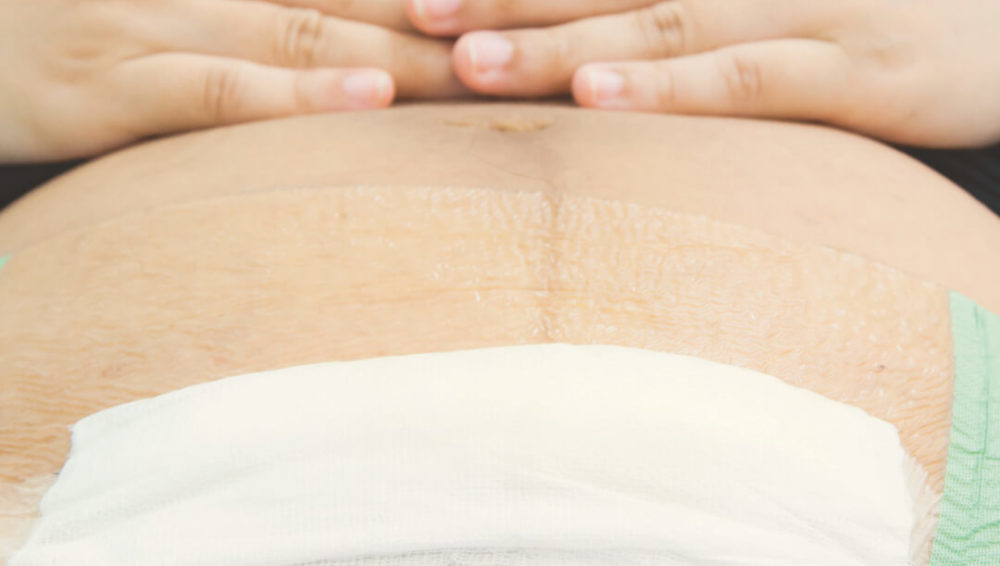Possible causes for C-section
Giving Birth

About one-third of children in Thailand are born through C-Section. Aside from personal reasons and certain believes, there are medical reasons that make C-Section delivery necessary.
Reasons for a scheduled C-Section
There are many medical reasons for your doctor to recommend the procedure in advance of your due date to protect you and little {{ NAME}}:
- Certain medical conditions: You may have a chronic condition like heart disease, diabetes, high blood pressure, or kidney disease, making vaginal delivery dangerously stressful to your body. So birth by C-section is a safer option.
- Infections: If you’re HIV-positive or have an active genital herpes infection, a scheduled C-section is necessary to prevent the viruses from being transmitted to your baby during delivery.
- Your baby’s health: A congenital condition or illness might make the already tricky journey through the birth canal even more treacherous for your baby.
- A large baby: Sometimes, your baby is too large (a condition called macrosomia) to move safely through the birth canal. This can happen if you gained much more than the recommended amount of weight during pregnancy.
- Your weight: Being obese significantly increases your chance of needing a C-section delivery. This is because of the other risk factors that often accompany obesity — like gestational diabetes — and obese women tend to have a longer labor.
- Your age: While being older doesn’t mean a cesarean delivery is required, it, however, increases the odds of having one.
- Breech position: When your baby is coming with either feet-first or butt-first in a breech position and can’t be turned, your practitioner might decide that a C-section is necessary.
- Multiples: The likelihood of the procedure increases with the number of babies you’re carrying.
- Placental problems: If the placenta is partly or completely blocking the cervical opening (placenta previa) or has separated from the uterine wall (placental abruption), a C-section is safer for you and your baby.
- Preeclampsia: If you develop preeclampsia (pregnancy-induced high blood pressure) and treatment isn’t working, your practitioner might opt for a cesarean section to protect you and your baby.
- A previous C-section: While having a first cesarean raises your risk of subsequent procedures, vaginal birth after c-section, VBAC, is actually often successful and even recommended.
Reasons for an unscheduled C-section
Severally, the need for a cesarean section isn’t obvious until a woman is well into labor. A few of the most common reasons are:
- Labor doesn’t start: If your labor isn’t progressing in the first place and your cervix isn’t dilating, although you’re having contractions for 24 hours, your doctor might decide on surgery.
- Labor stalls: You might have an easy early stage of labor — dilation to 3 centimeters — but then everything comes to a halt. This happens, for example, if your baby’s head is too big to fit through your pelvis.
- Exhaustion or fetal distress: If your doctor determines that you’re becoming too exhausted or the fetal monitor picks up signs of your baby in distress, a C-section may be necessary.
- A prolapsed umbilical cord: If the umbilical cord slips into the birth canal before the baby does, it will be compressed as your little one comes through, and this could cut off the baby’s oxygen supply.
- Uterine rupture: If your uterus tears, a C-section is required.
Choosing date and time
If you are in control over picking the due date without any harm to you or your baby, try to have Your Child during or after week 39, so your baby arrives in this world strong and healthy. As for the time, most Cesareans are performed at 8 AM. Naturally, however, most children would come to birth during the night or in the very early morning, with a peak around 4 AM. Something you may want to know if you can pick.
Verified:
Dr. Wanwadee Sapmee Panyakat (OB-GYN), license no. 41208 (16 January 2019)



